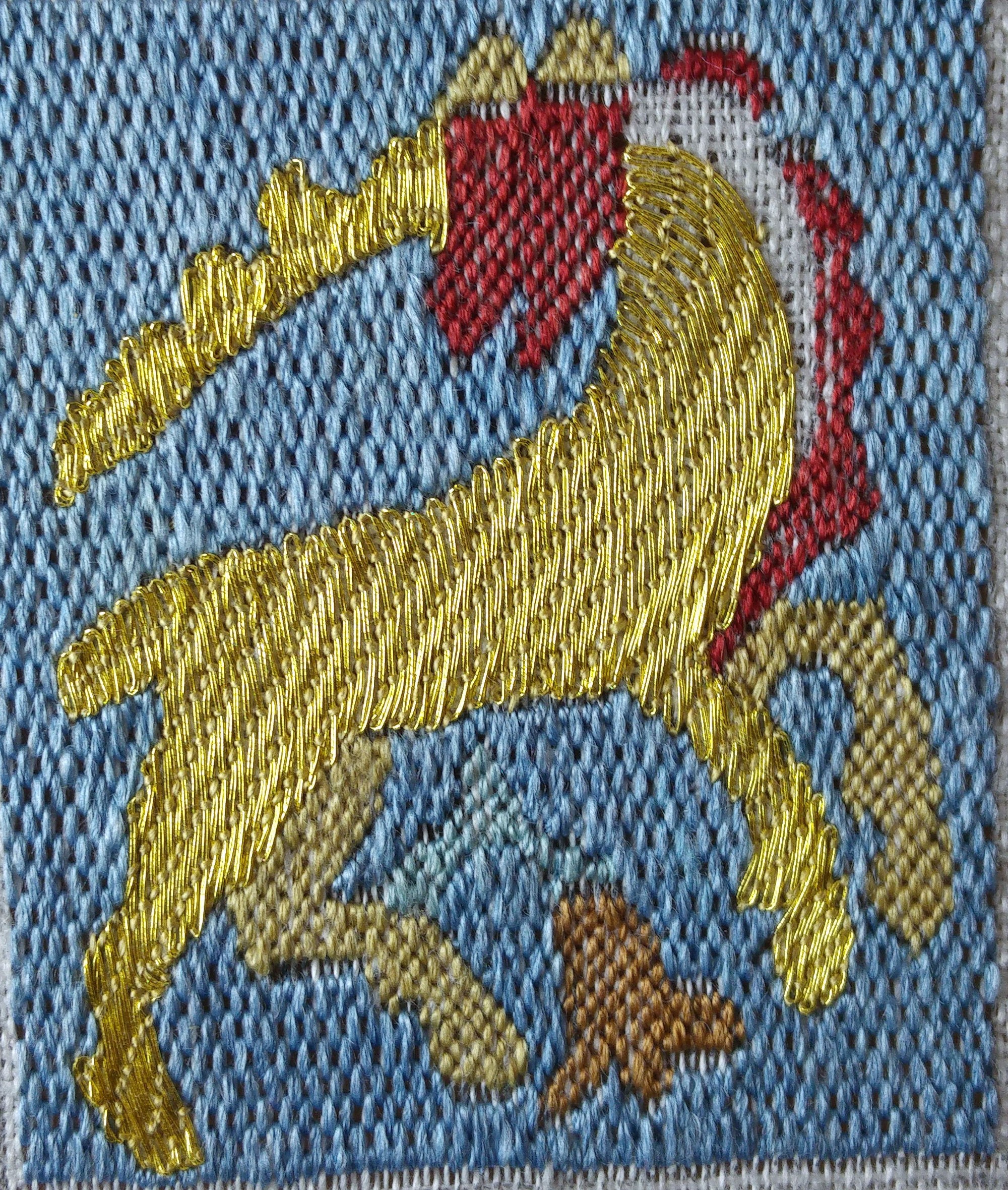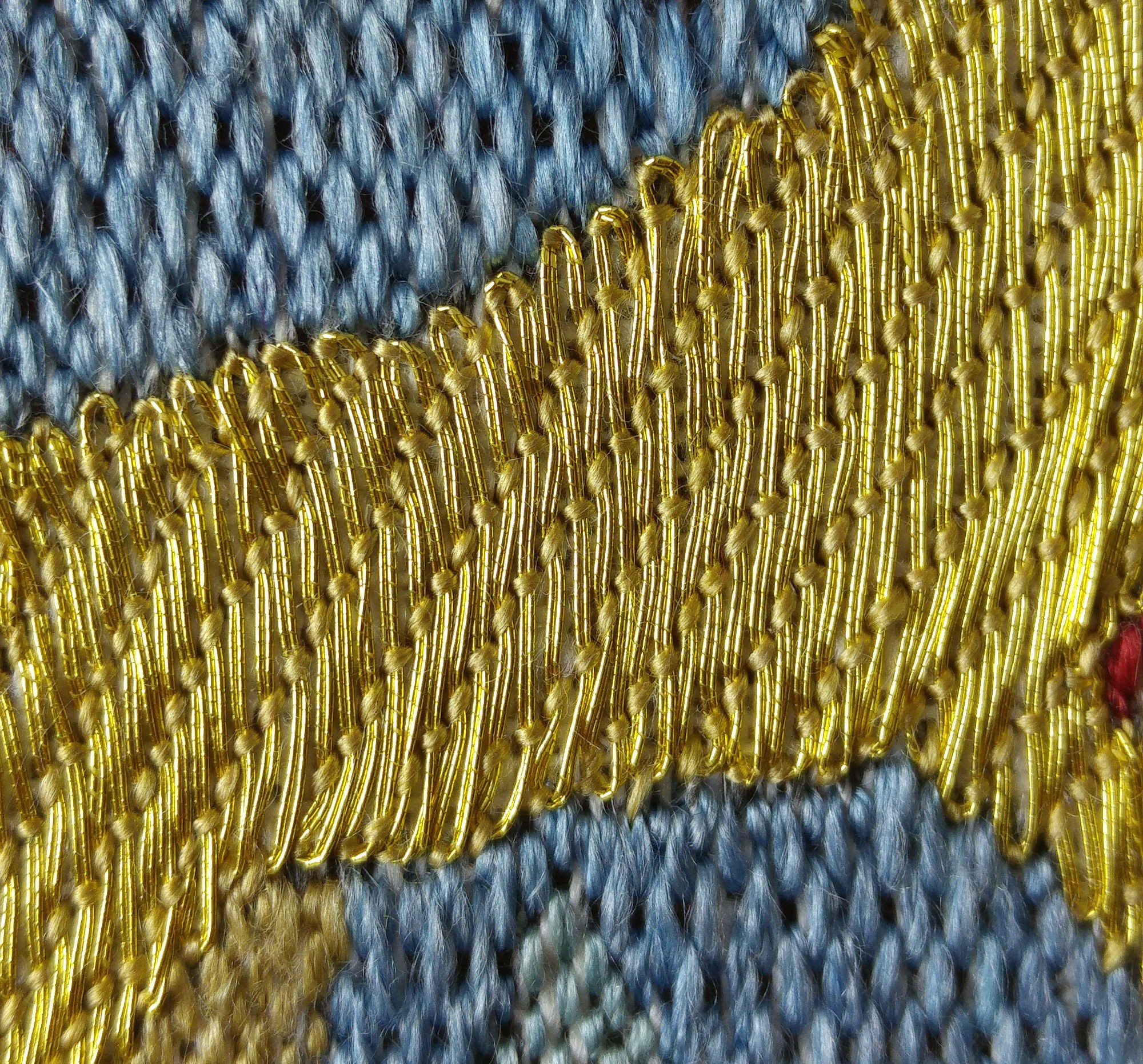gefüllt mit gesponnenem Gold - oberflächliche Anlegetechnik / filling the forms with spun gold - surface couching
Geschrieben in Sticken am 12.01.2017 von Eva-Maria
Am Almosenbeutel mit Fabelwesen tut sich etwas. Ich habe begonnen, die tierischen Mischwesen mit Goldfaden auszufüllen. Dabei bediene ich mich der oberflächlichen Anlegetechnik. Das bedeutet, dass ich den 22-karätigen Goldfaden auf die zu füllende Fläche lege und mit einem farblich passenden Seidenfaden Schritt für Schritt festnähe (Video Tutorial, bebildertes Tutorial). Dabei achte ich darauf, dass die Haltestiche diagonale Linien bilden (es wären auch andere Muster wie zB Zick-Zack, Rauten, Blumen oder ein Ziegelmuster möglich). Da der Goldfaden so dünn ist, verwende ich immer zwei Fäden gleichzeitig, die ich am Ende der Fläche vorsichtig umknicke (Tutorial) und die losen Ende auf die Hinterseite des Stoffs versenke und dort festnähe. Mit einiger Übung und gutem Licht klappt das ganze auch recht zügig. ![]()
The embroidery for the recreation of the alms pouch exhibited in the Met Museum (Accession Number: 27.48.3) is moving further along. Recently I began to fill the creatures with gold embroidery, using surface couching. To fill the area, I lay the 22-carat real gold thread on the surface and fix it step by step with a yellow-coloured silk thread (video tutorial, illustrated tutorial). I take care to arrange the holding stitches in a way that forms diagonal lines across the area (it would also be possible to create other patterns, for example zig-zags, diamonds, flowers or a brick pattern). As the gold thread is really thin, I work with two threads at a time and bend them as one at the end of the area (tutorial) and hide the loose ends at the back of the embroidery, where they are sewn in place. With a little practice and good lighting the whole surface couching progresses quite smoothly. ![]()

How it's sparkling! The 22-carat real gold thread is true to its name and shines wonderfully.

The holding stitches form diagonal lines and are an additional artistic feature.

